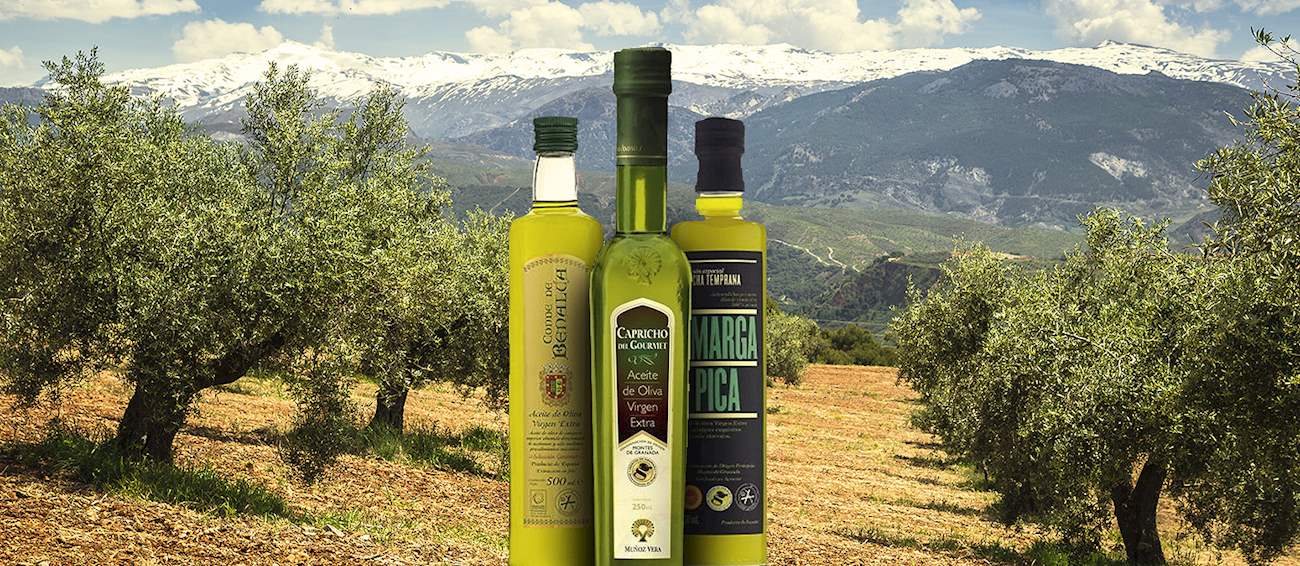Sierra Magina is an extra-virgin olive oil obtained from Picual and Manzanillo de Jaén olives, produced in 16 municipalities in the Province of Jaén surrounded by the Sierra Mágina Natural Park. Ripe olives are carefully harvested, selected and transferred to oil mills and pressed within two days of gathering.
The oil is immediately analyzed, graded and packaged to be placed on the market. Its taste is very fruity and slightly bitter. Sierra Magina has a distinctive deep green to golden yellow color, depending on the harvesting season and olive grove location.
Montes de Granada is an extra virgin olive oil made from selected olives of Picual, Lucio and Loaime varieties grown in the province of Granada. This extra virgin olive oil is obtained by mechanically extracting the oil, taking care that the temperature does not exceed the 27 degrees Celsius during any stage of the production.
Montes de Granada is green to greenish yellow and has a mellow flavor with fruity and green notes. This oil is slightly bitter and pungent and has a pleasant peppery aftertaste. Every step of the production of Montes de Granada, including packaging and labeling, must take place in the province of Granada to ensure superior quality and traceability of this exceptional oil.
MAIN INGREDIENTS
Aceite de la Rioja is an extra virgin olive oil produced in the region of la Rioja in Spain. This olive oil is produced from native olives such as Redondal, Picual, Cornicabra and Arbequina using only mechanical processes that do not deteriorate its structure and organoleptic properties.
This oil is bright green and has a fruity and somewhat bitter taste. The flavors and smell of this olive oil resemble that of green olives, almond, citrus, and grass. All stages of processing and production of this oil, including bottling, must take place in the region of la Rioja.
TasteAtlas food rankings are based on the ratings of the TasteAtlas audience, with a series of mechanisms that recognize real users and that ignore bot, nationalist or local patriotic ratings, and give additional value to the ratings of users that the system recognizes as knowledgeable. TasteAtlas Rankings should not be seen as the final global conclusion about food. Their purpose is to promote excellent local foods, instill pride in traditional dishes, and arouse curiosity about dishes you haven’t tried.




